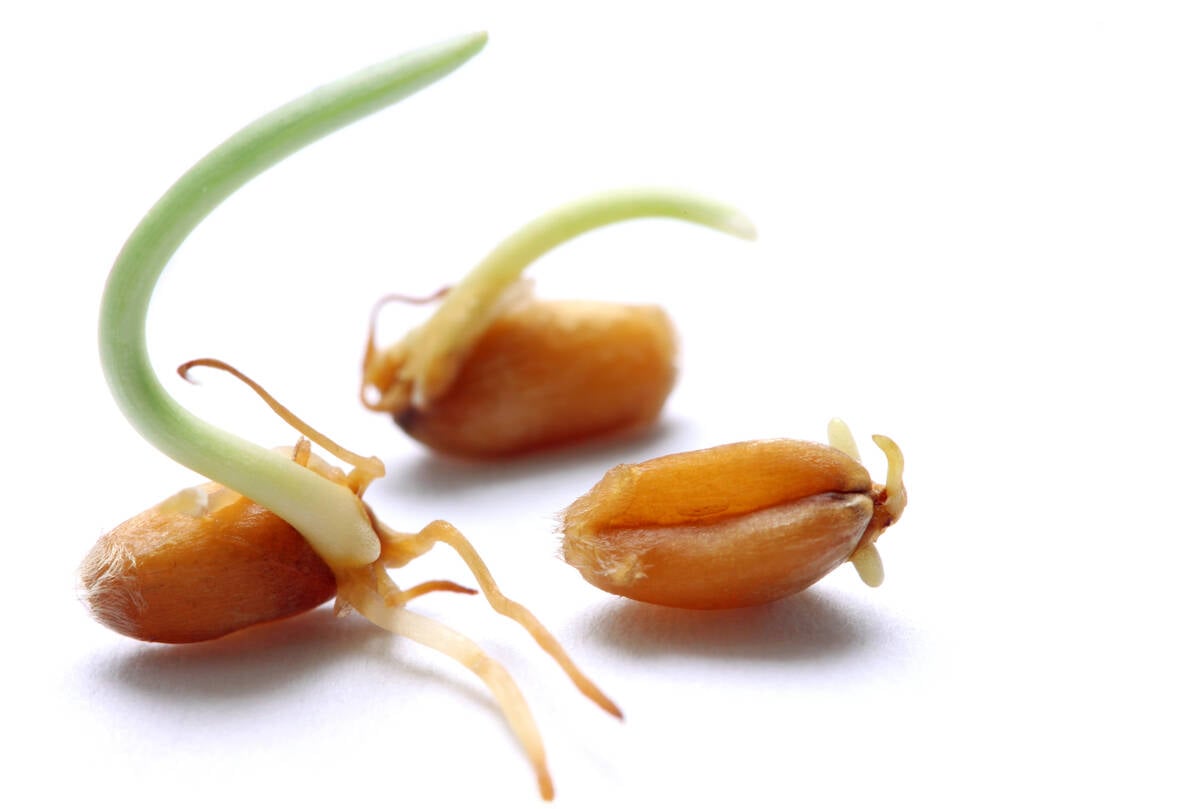Big dollars aren’t attracting flax into the system.
Many farmers are holding back, hoping for better prices in the spring, a bet many think is a good wager.
“We’re in no big hurry,” said Darren Frank of FarmLink Marketing Solutions.
This fall, farmers with flax have often been able to sell for $14 to $16 per bushel. That’s a good price by historical standards, but farmers are bullish because there is little flax in their bins.
Read Also

Manitoba farmers fight sprouted wheat after rain
Rain in mid-September has led to wheat sprouting problems in some Manitoba farm fields.
Bad seeding and harvesting conditions hurt crops and many expect Statistics Canada’s December production report to reduce its crop size estimate.
“I think you’ll see less of both,” said Frank about 2010 yield and acreage numbers.
“I think that’ll tighten things up.”
Flax has a fractured market in terms of time and demand. Its buyers include crushers in Europe, who make linoleum out of the oil and sell the meal to dairy cattle, crushers in North America who sell the oil mostly for human consumption, and specialty food processors and retailers who sell whole seed and processed seed products into the health food market.
The European and North American markets are divided, with the former closing in December when the St. Lawrence Seaway closes for the winter.
Recent high prices for flax are due to grain companies attempting to fill shipments to Europe before freeze-up. But Frank said he doubts prices will slip much after the seaway closes.
“We may go into a bit of a lull, but most people are looking at the spring,” said Frank.
Brian Johnson, the operator of Johnson Seeds in Arborg, Man., said the spread between canola and flax is high now, and that may ration demand over the winter.
“Customers, especially in the crushing business, will look to alternatives,” said Johnson, who specializes in sales to the North American food market. “That could put a bit of a lid on prices.”
He said farmers are being rewarded for keeping their crops on farm.
One reason prices have risen so much this fall is the continuing saga of Triffid, the genetically modified flax variety that has thrown the Canadian industry and exports into turmoil.
Farmers accessing export markets generally need to certify their crops are Triffid-free, and that takes time.
“There are a lot of people still waiting for their test assessments,” said Johnson.















